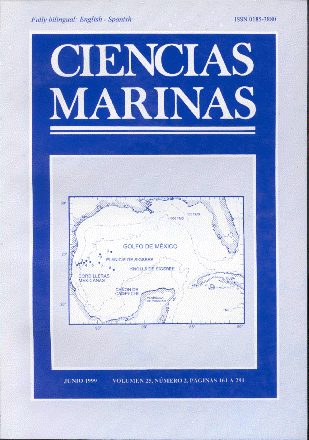Thallium in the marine environment: First ecotoxicological assessments in the Guadalquivir estuary and its potential adverse effect on the Doñana European natural reserve after the Aznalcóllar mining spill (SW Spain)
Main Article Content
Abstract
Thallium (Tl) is an extremely toxic but little-studied element in the marine environment and practically no information has been reported on the levels of Tl in marine organisms. After the Aznalcóllar mining spill (April 1998), high levels of metals were put into the environment. This acidcontaminated medium was responsible for the initial pollution effects measured in the Guadiamar River, which is an affluent of the Guadalquivir River and very close to the biggest natural reserve in Europe (Doñana). Four different species were used in the monitoring from April to September 1998 and a sediment field bioassay to check bioacumulation was performed. We present the first ecotoxicological evaluation of the mining spill in the Guadalquivir River, with reference to Tl, a little-known metal. Also, Pb and Cd data were compared to Tl during field sediment testing. Results show low levels of this metal in all of the organisms studied and they do not show any increase in the level of this metal, ranging from 40 to 90 ng g–1, 80 to 210 ng g–1, 15 to 98 ng g–1 and 75 to 125 whole body dry weight for Scrobicularia plana, Liza ramada (muscle), Crassostrea angulata and Uca tangeri, respectively. These are the first field data of Tl concentration measured using estuarine organisms. Field sediment toxicity test results confirm those obtained during the monitoring: Tl is not bioaccumulated by the organisms (C. angulata) used in the test. The sequence in bioaccumulation of metals was Cd > Pb > Tl. Both studies, bioaccumulation and sediment toxicity, should be maintained during the next few years to really evaluate the potential effect of the mining spill on the ecosystem and society.
Downloads
Article Details
This is an open access article distributed under a Creative Commons Attribution 4.0 License, which allows you to share and adapt the work, as long as you give appropriate credit to the original author(s) and the source, provide a link to the Creative Commons license, and indicate if changes were made. Figures, tables and other elements in the article are included in the article’s CC BY 4.0 license, unless otherwise indicated. The journal title is protected by copyrights and not subject to this license. Full license deed can be viewed here.

